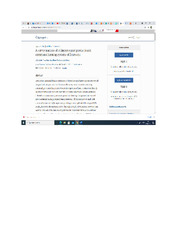| dc.contributor.author | Monau, Phetogo | |
| dc.contributor.author | Visser, C. | |
| dc.contributor.author | Nsoso, Shalaulani James | |
| dc.contributor.author | Van Marle-Köster, E. | |
| dc.date.accessioned | 2021-07-07T07:37:50Z | |
| dc.date.available | 2021-07-07T07:37:50Z | |
| dc.date.issued | 2017-06-17 | |
| dc.identifier.citation | Monau, P. I., Visser, C., Nsoso, S. J., & Van Marle-Köster, E. (2017). A survey analysis of indigenous goat production in communal farming systems of Botswana. Tropical animal health and production, 49(6), 1265-1271. | en_US |
| dc.identifier.issn | 1573-7438 | |
| dc.identifier.uri | https://link.springer.com/article/10.1007/s11250-017-1324-6 | |
| dc.identifier.uri | http://researchhub.buan.ac.bw:80/handle/123456789/63 | |
| dc.description | Access available through BUAN EBSCO discovery service | en_US |
| dc.description.abstract | A total of 153 communal farmers in four agro-ecological regions of Botswana were interviewed using a structured questionnaire. The aims of the survey were to characterise existing communal goat production systems, evaluate the importance of goats to farmers and identify breeding practices and constraints encountered in goat production in Botswana. Data was collected on socio-economic parameters, general and breeding management practices and major constraints limiting goat production in Botswana. All respondents were small-scale communal farmers with 63% respondents practising mixed crop-livestock farming and 37% keeping livestock as their primary activity. The majority (33%) of respondents were older than 60 years. Over 80% of the farmers kept goats for cash required for tuition, school uniforms and household commodities as well as re-stocking of animals. Most farmers (62%) kept indigenous crossed genotypes. Generally, uncontrolled mating was practised with the majority of farmers (41%) using on-farm reared bucks for more than two years of breeding and communal bucks (36%) as an alternative. The major constraints limiting goat productivity in communal areas included uncontrolled breeding, predators, theft and diseases. Issues raised by farmers should be considered in designing and implementing effective breeding programs for goats to improve their overall productivity and contribution to poverty alleviation in these communities. | en_US |
| dc.language.iso | en | en_US |
| dc.publisher | SpringerLink | en_US |
| dc.relation.ispartofseries | Tropical animal health and production;Vol. 49(6): 1265-1271 | |
| dc.subject | Botswana | en_US |
| dc.subject | Communal | en_US |
| dc.subject | Production system . | en_US |
| dc.subject | Small holders | en_US |
| dc.title | A survey analysis of indigenous goat production in communal farming systems of Botswana | en_US |
| dc.type | Article | en_US |

